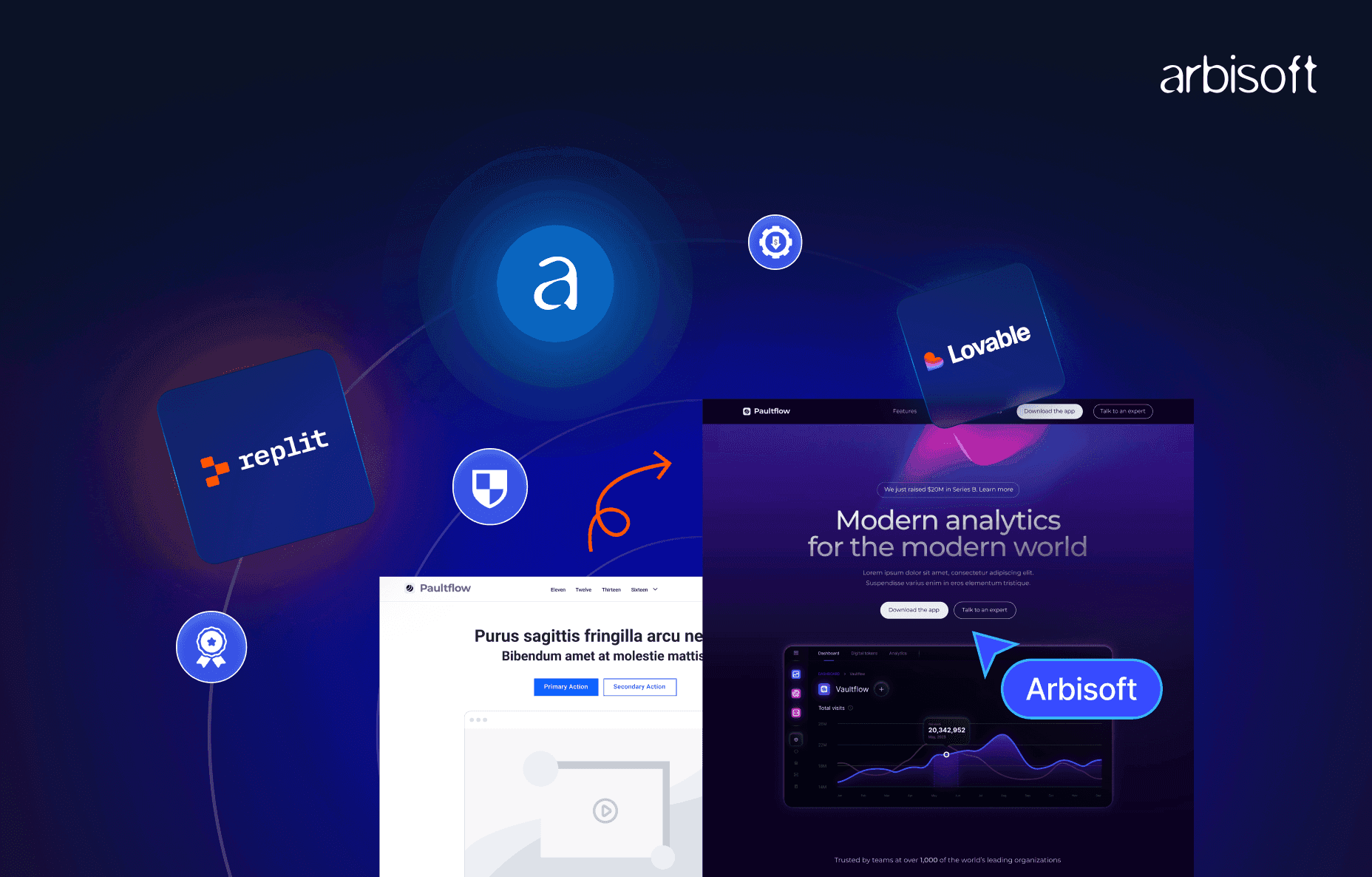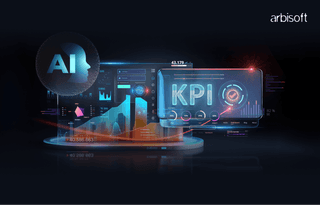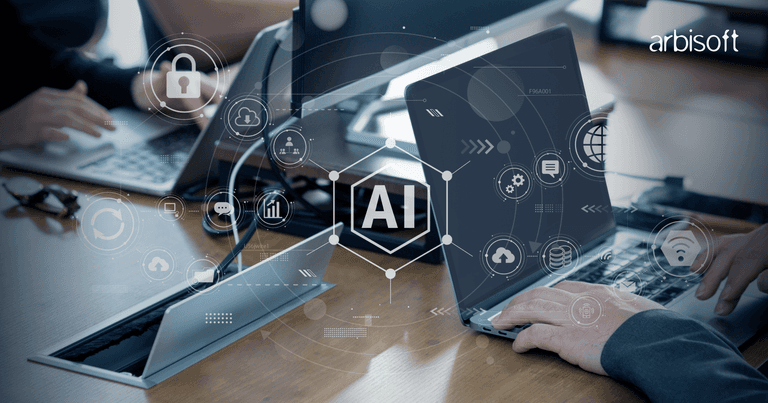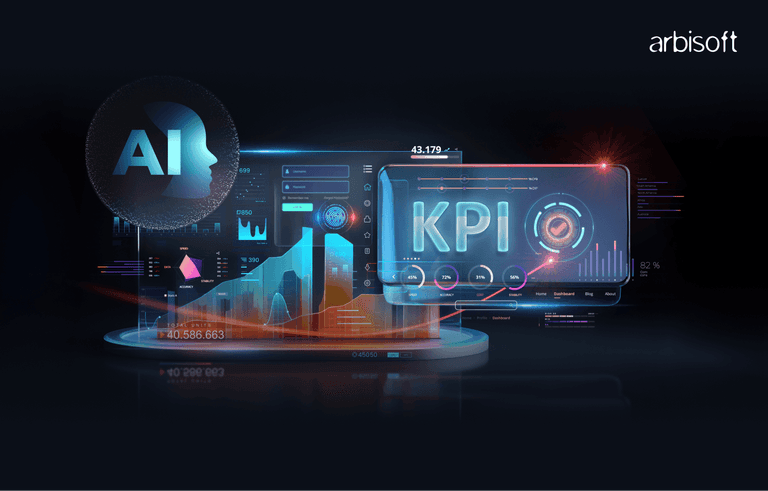We put excellence, value and quality above all - and it shows




A Technology Partnership That Goes Beyond Code

“Arbisoft has been my most trusted technology partner for now over 15 years. Arbisoft has very unique methods of recruiting and training, and the results demonstrate that. They have great teams, great positive attitudes and great communication.”
AI Hype vs. Reality: Can Vibe Coding AI Tools Help You Go from Prototype to an MVP Product?

AI tools are rapidly becoming part of the software development conversation. For early-stage startups working to get an MVP into the market, the promise is compelling: faster coding, fewer bugs, and more progress with a lean team.
But as with any new technology, the question isn’t whether it sounds impressive. The real test is whether it actually works in real product environments, under real deadlines, and with real consequences.
This blog takes a closer look at how AI-assisted development fits into the MVP journey, specifically, whether it can help you go from prototype to production efficiently and reliably.
Why Startups Turn to AI Tools in the First Place
Startups typically begin with a sharp idea, a tight budget, and a ticking clock. The pressure to deliver a working MVP is immediate. Investors expect momentum. Early adopters expect something functional. And engineering teams are expected to move fast without cutting corners.
AI coding tools promise a way to save time by handling repetitive and low-complexity development tasks. The potential is real, but so is the need to stay grounded. AI can accelerate parts of the process, but it cannot replace sound engineering judgment or product strategy.
When used well, AI is an assistant. Not a decision-maker.
The Hard Part: Getting from Prototype to Production
A prototype is a proof of concept. It helps you test an idea or pitch a vision. But turning that into a production-ready MVP is a different challenge altogether.
What separates prototypes from real products is discipline. The production stage demands code that is stable, testable, and maintainable. It also requires full integration with real-world systems and workflows. This typically includes:
- Refactoring quick-and-dirty prototype code into a proper architecture
- Writing automated tests for new features and regression coverage
- Integrating APIs for authentication, payments, storage, and analytics
- Setting up CI/CD pipelines for reliable deployment
- Handling error states, edge cases, and real user data
In this stage, quality matters more than speed. AI tools that were helpful during early experimentation now need to support stricter engineering standards.
Getting from a working prototype to a stable MVP also depends on who builds it, which is why choosing the right technology partner for MVP development is just as critical as the tools you use to speed things up.
Where AI Coding Tools Actually Provide Value
AI-assisted development shines when used strategically, not universally. Here are areas where AI often adds tangible value:
- Generating boilerplate code for models, services, or components
- Creating test scaffolds for unit or integration tests
- Assisting with syntax, formatting, and naming conventions
- Drafting configuration files or environment setup scripts
- Providing inline comments or documentation support
In short, AI can handle the low-friction work that often eats up developer time. That frees up the team to focus on architecture, performance, user experience, and other high-impact decisions.
Used properly, AI tools help you accelerate without losing structure.
What to Watch Out For: The Hype vs. The Reality
Most AI coding tools are marketed with bold promises: write entire apps in minutes, eliminate bugs, reduce development costs. In practice, it’s rarely that clean.
Here’s what to be mindful of:
- Lack of project context: AI can miss key business logic or domain-specific rules
- Inconsistent output: Code quality may vary from one prompt to the next
- Structural mismatches: Generated code might not align with your architecture
- Hidden technical debt: Poorly reviewed AI code can introduce fragile logic
- Extra review burden: AI code still requires human validation and testing
This is why AI-generated outputs should be treated as drafts or starting points, not production-ready modules. Just like junior developer contributions, they require oversight, review, and integration into the larger system.
How AI Tools Fit into Real Development Workflows
Startups that use AI successfully in their development pipeline treat it as part of the workflow, not the centerpiece.
Here’s how AI can support real-world MVP development:
- Backend support: Drafting routes, controllers, or data handlers
- Frontend help: Creating reusable UI components, layout templates
- Validation logic: Writing input validators and error messaging
- Documentation: Auto-generating basic readme files or endpoint docs
Crucially, these tools don’t demand that you abandon your stack. They plug into standard development environments and play well with Git, linters, test suites, and CI/CD tools. That makes them far more usable than platforms that require you to change how your team works.
To build on that foundation, Arbisoft’s MVP development services are designed to integrate seamlessly into existing engineering workflows, helping startups test, validate, and iterate faster, without compromising software quality.
How to Use AI Strategically During MVP Development
If you're serious about moving from prototype to production, your team needs a plan for where and how AI fits into the workflow.
Here’s a practical framework:
- Define the scope: Identify which tasks are repetitive, non-sensitive, and well-bounded
- Keep humans in the loop: Reserve architectural, business-critical, or security-sensitive work for manual review
- Refactor before shipping: Never deploy AI-generated code as-is—refine it to match your project’s standards
- Enforce testing: Apply the same review and test requirements to AI-assisted code as to any other
- Track value: Monitor whether AI use is actually speeding things up or creating more work
With a clear structure, AI becomes a force multiplier, not a crutch.
What to Look For in an AI Tool for Your MVP Workflow
Not all AI coding tools are created equal. Some promise the moon but don’t integrate well into your daily work. Here’s what to look for when evaluating one:
- Integration: Can it plug into your IDE, Git workflow, and CI/CD pipelines?
- Clarity: Is the output readable, consistent, and easy to debug?
- Flexibility: Does it support your stack without forcing major changes?
- Accessibility: Can junior and senior devs both use it effectively?
- Maintainability: Is the code it produces clean, well-structured, and scalable?
Your goal isn’t to automate the entire pipeline. Your goal is to reduce the time spent on repetitive tasks so your team can focus on solving real problems.
How to Measure AI’s Real Value in MVP Development
To decide whether an AI tool is helping or hurting, skip vanity metrics. Focus on the real stuff:
- Are more features being delivered in the same time frame?
- Has code quality remained steady or improved?
- Are setup tasks, like writing tests or configs, faster to complete?
- Is the team spending more time on core logic and UX?
If you’re seeing progress on those fronts, the tool is doing its job. If not, it’s time to reassess.
Final Thoughts: Going from Prototype to MVP with Confidence
Getting from concept to MVP is one of the hardest stages in a startup’s life. It takes speed, discipline, and clarity. AI tools can help, but only when they’re used with intention and oversight.
Use AI to support, not drive, your development process. Let it handle what’s repetitive and low-risk. Keep human eyes on the things that make your product unique.
When you apply that balance, AI becomes a practical addition to your toolbox. It helps you build with more confidence, fewer blockers, and a clearer path from prototype to product.
FAQs: AI Tools in MVP Development
1. Can AI coding tools really take an MVP from prototype to production?
They can help, but they can’t do it alone. AI is best at accelerating repetitive, well-defined tasks like generating boilerplate code, scaffolding tests, or creating configuration files. The structural, business-critical, and security-sensitive work still needs experienced engineers.
2. What types of tasks are safest to hand over to AI during MVP development?
Tasks that are repetitive, low-risk, and easy to validate, such as input validation scripts, UI component templates, or environment setup scripts, are well-suited for AI. Anything involving business logic, complex architecture, or sensitive data should remain under human control.
3. How do I know if my AI tool is actually adding value?
Track whether you’re delivering more features in the same time, whether code quality is consistent, and whether routine development tasks are faster. If the tool is creating extra review or debugging work, its value may be limited.
4. Can AI-generated code be used directly in production?
It shouldn’t be. AI code should be treated as a draft that’s refactored, reviewed, and tested before release. Deploying it without oversight risks introducing hidden bugs or technical debt.
5. How do AI tools fit into a startup’s existing tech stack?
The best tools integrate directly into your existing IDE, Git workflow, and CI/CD pipeline without forcing a change in stack. They should enhance, not replace, your current processes.
























